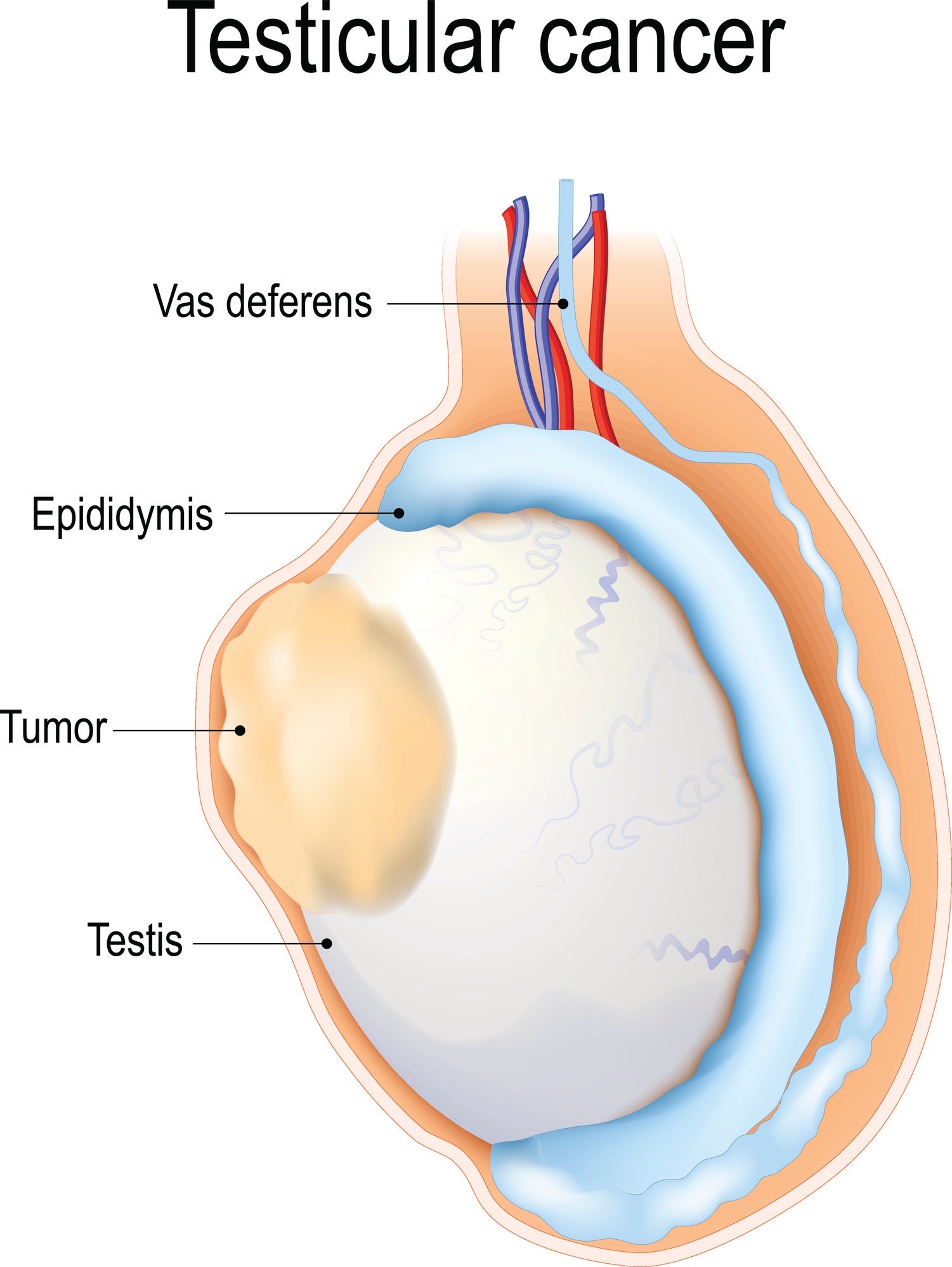How to Perform Testicular Self-Exams

Did you know that testicular cancer is one of the most common cancers affecting young men? Fortunately, survival rates are high, but when diagnosis comes during the later stages, patients often require chemotherapy, which can not only cause unfortunate side effects but can also impact fertility. It’s best to catch it in the early stages, so that the cancer can be removed through surgery, with no other treatment required. How can you catch it? With regular testicular self-exams. Here, we offer instructions on how to effectively perform these exams.
The first step is to know your own anatomy. If one testicle is larger or hangs lower than the other one, don’t be alarmed, because this is normal. Be aware that the epididymis is located at the back and top of each testicle and can be mistaken for a mass. Feel for it to get a sense of where it is: it will feel softer and bumpier than the testicle.
Once you have a good understanding of how your testicles normally feel, it’s time to start performing a monthly exam. It’s best to do it in the shower because a warm shower will make the exam easier by relaxing the scrotum and the surrounding muscles. Examine each testicle separately, following these steps.
- Cup the testicle, using both hands.
- Roll it between the thumb and fingers, using slight pressure.
- Feel for lumps or irregularities.
If you do find something unusual, see your doctor as soon as possible. Typically, men wait four to six months to see a doctor, and this is a mistake, because it can allow the cancer to spread. Don’t wait too long out of embarrassment or fear, the doctor has seen it all before and it won’t be a painful exam. Your doctor will perform a quick exam, talk to you, and send you for an ultrasound. Most of the time, testicular masses are not cancerous, but it’s important to see the doctor to make sure. Even a benign condition can cause pain and threaten your fertility, including cysts, infection, injury, varicocele, or hydrocele.
There are other symptoms and signs of testicular cancer as well, so it’s smart to keep an eye out for them. A lump or enlarged testicle is typically the first sign, and other symptoms could mean that the cancer has spread. These symptoms include pain, discomfort, or numbness in the testicle or scrotum, change in the way your testicle feels, or a feeling of heaviness, a dull ache in the lower abdomen or groin, or sudden build-up of fluid in the scrotum. You might also experience breast tenderness or growth, lower back pain, shortness of breath, chest pain, and bloody sputum or phlegm. Sometimes a blood clot can form because of testicular cancer, causing swelling in the legs and shortness of breath. Any suspicious symptoms warrant a visit to the doctor as soon as possible.
At the Center for Vasectomy Reversal, we pride ourselves on helping men improve their fertility through uncompromising, concierge-level patient care. Under the direction of Dr. Joshua Green, our team provides state-of-the-art treatment for men who need a reversal of their vasectomy or have other fertility concerns. To learn more, contact us through our website or call 941-894-6428.
Recent Posts
Popular Posts
categories
- Uncategorized
- Sperm Retrieval
- vasectomy reversal
- Emergency
- Dr. Green
- sperm count
- fertility
- male infertility
- MESA
- medical care
- low sperm count
- IVF
- male fertility testing
- anesthesia
- pregnancy
- sperm aspiration
- semen analysis
- post-vasectomy pain syndrome
- infertility
- VE
- anti-sperm antibodies
- older dad
- general anesthesia
- gender reveal party
- post-operative infections
- baby name
- parent
- baby's first year
- fertilization process
- spinal anesthesia
- ACS Fellow
- nutrition tips
- concierge-level care
- fertility planning app
- azoospermia
- out-of-town patients
- V-V
- post-vasectomy reversal
- conceiving
- vasectomy
- vasoepididymostomy
- smoking
- sperm quality
- baby registry
- infographic
- surgical care
- surgical consultation process
- prostate cancer
- baby gender
- family time
- COVID
- Baby Shower
- Child Care
- Halloween Costume Ideas for Babies
- Halloween
- Halloween Safety Tips
- Celebrity Infertility Spotlight
- Postpartum
- testosterone
- Father's Day
- Father
- Men's Health
- Thanksgiving
- Pregnancy Announcement
- Parenting Tips
- Sperm
